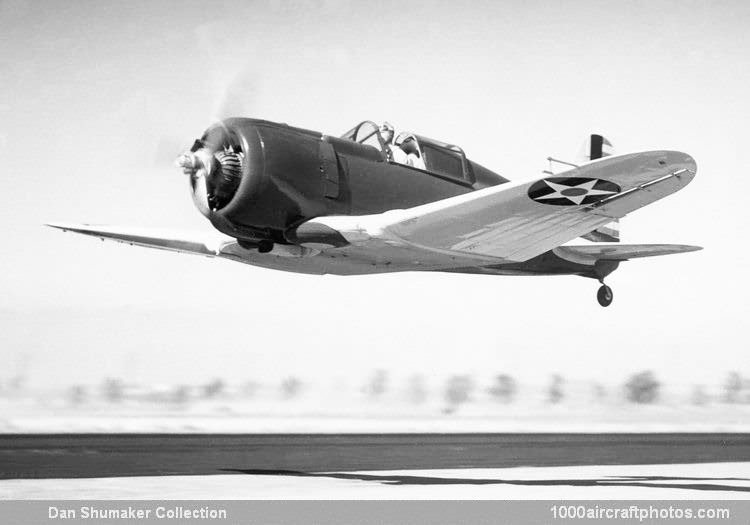09/30/2014. Remarks by Johan Visschedijk: "In early 1935, the USAAC Materiel Division announced a design competition for single-seat fighters to replace the Boeing P-26s, then the most advanced aircraft equipping USAAC Pursuit Groups. Manufacturers were invited to submit private venture prototypes for evaluation at Wright Field beginning on May 27, 1935. Initially, three companies decided to enter prototypes in the forthcoming competition: the Curtiss-Wright Corporation which designed its Model 75, the prototype of the P-36 and H75 series; the Seversky Aircraft Corporation which planned to develop a single-seat variant but initially delivered a two-seat prototype, the SEV-2XP, the forebear of the P-35 series; and the Northrop Corporation which proposed its Model 3A.
To obtain the necessary performance while hastening the development of the new aircraft, a Northrop engineering team led by Ed Heinemann decided to design a retractable landing gear variant of the XFT-1/XFT-2 naval fighter prototype. In spite of this time-saving approach, the Northrop 3A was too late to be delivered to Wright Field and the Materiel Division decided to adjourn the competition until August 1935 rather than award a production contract to Curtiss whose Model 75 had been the only entry available on the specified date. However, the stroke of luck which appeared to give a new lease of life to the Northrop 3A was of short duration.
The 3A, powered by a 700 hp Pratt & Whitney Twin Wasp Junior SA-G fourteen-cylinder radial driving a three-blade propeller, was completed in July 1935. Finished in contemporary USAAC colors, blue fuselage with yellow wings and empennage, the aircraft was unarmed but had provision for two fuselage-mounted 0.30 in (7.62 mm) or 0.50 in (12.7 mm) machine guns. After completing preliminary manufacturer's trials at Mines Field, it was ferried to Wright Field in July 1935. However, limited evaluation (under the USAAC Project Number XP-948) by USAAC personnel confirmed the Northrop test pilot's report that the aircraft was rather unstable and prone to spinning.
Accordingly, the 3A was returned to Mines Field where Northrop hoped to find some quick solution to the stability problem before entering the aircraft in the August 1935 competitive trials. Intent on testing the modifications made to the aircraft before its scheduled return to Wright Field, First Lieutenant Frank Scare took off on 30 July, 1935, for a test flight over the Pacific and failed to return. No trace of the Northrop 3A or its pilot was ever found. The photo above depicts the Northrop 3A on what is believed to have been its last take off.
The loss of the prototype effectively removed Northrop from consideration as supplier of the next generation of fighter aircraft for the USAAC. Consequently, to recoup some of its investment in the project, the company sold its design to Chance Vought Aircraft which developed it into the equally unsuccessful V-141 and V-143."
